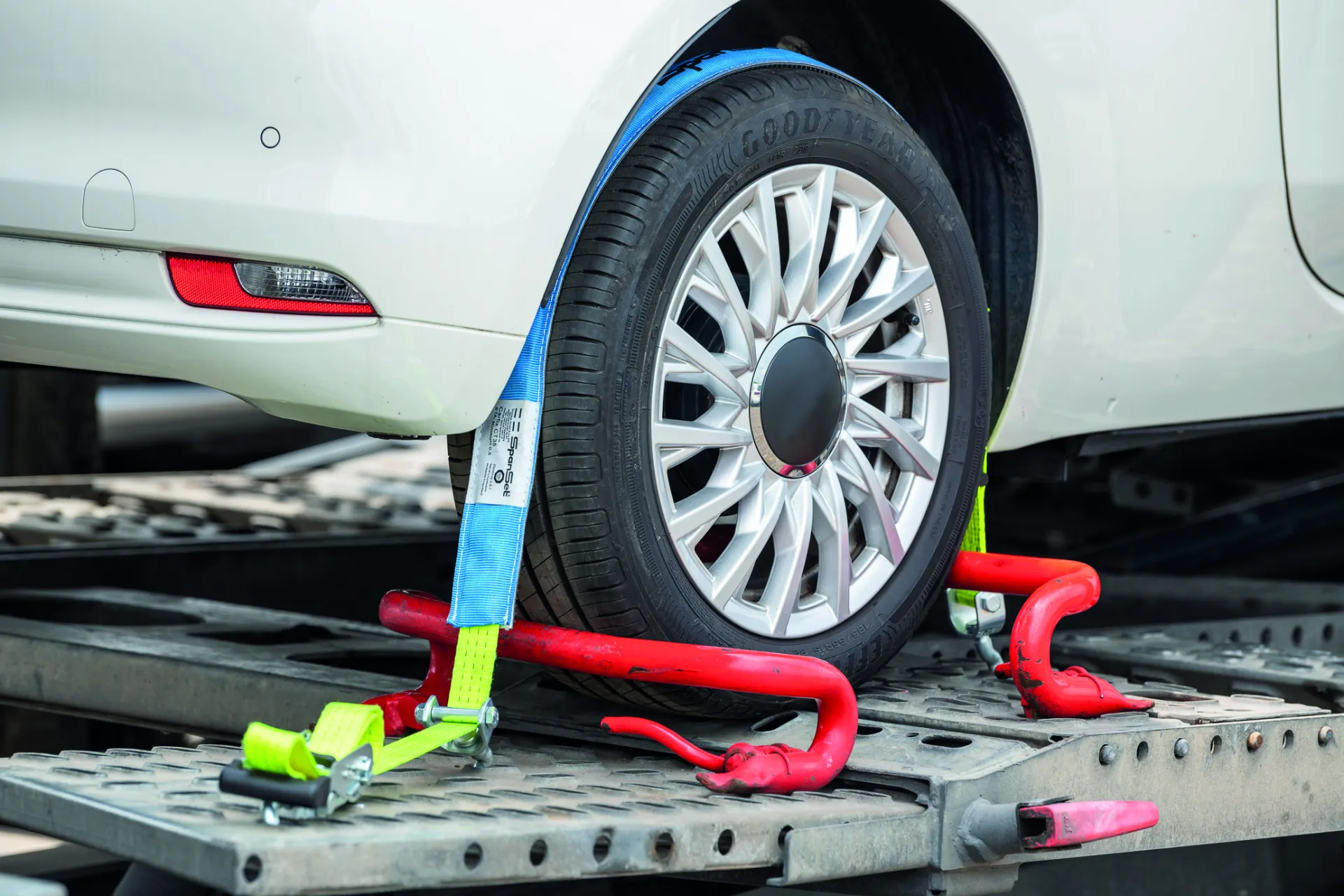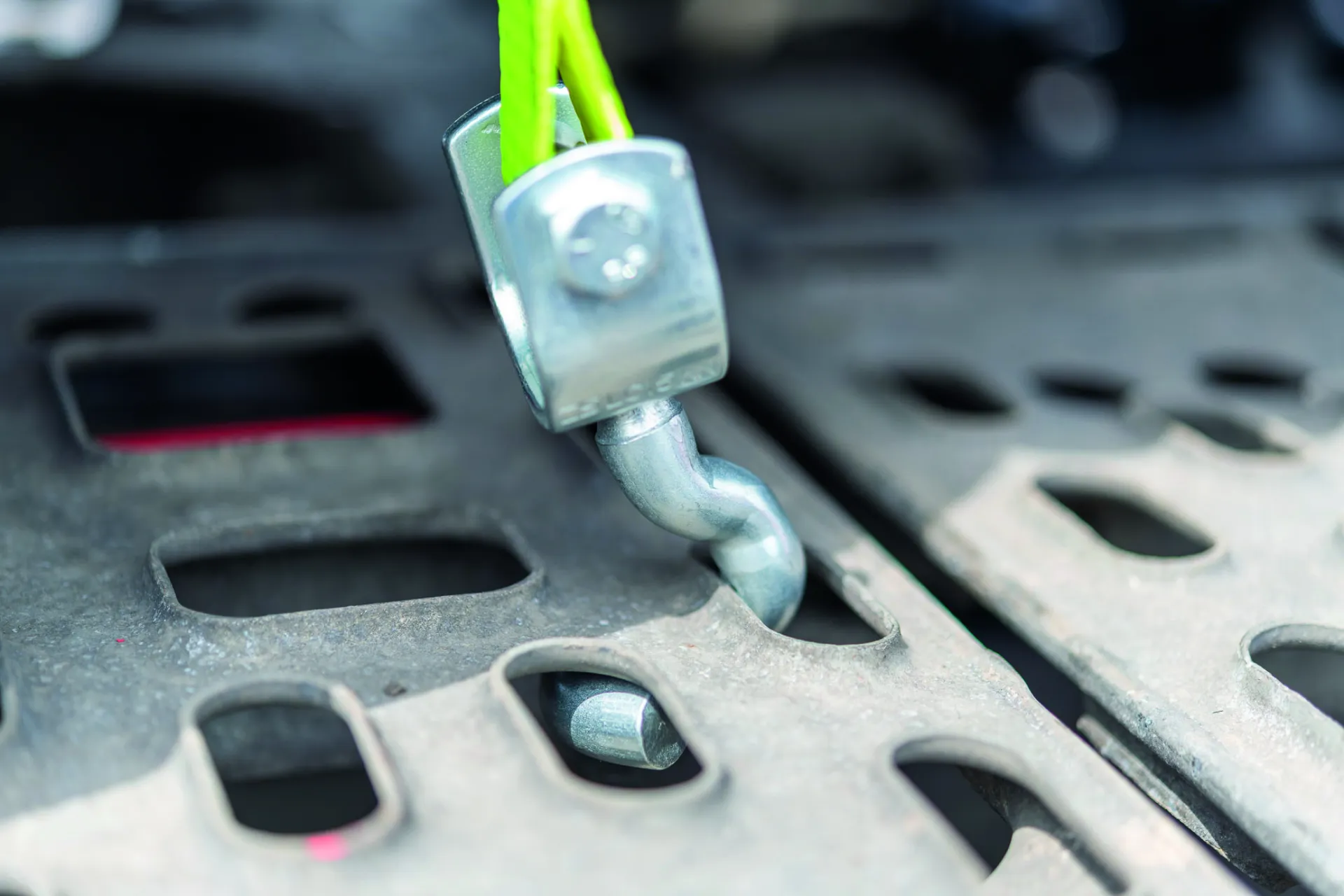"Put the VDI 2700 at the Top of Your Agenda"
The final version of the new VDI 2700 guideline (Sheets 8, 8.1, and 8.2) is expected to be published in the summer of this year. Once published, its content will be considered the recognized state of the art. The guideline focuses on how to secure passenger cars as well as light and heavy commercial vehicles on transporters, and the technical requirements that securing systems, floor plates, and wheel chocks must meet. Our editorial team spoke with Hans-Josef Neunfinger, spokesperson for the VDI guideline committee, which has been working on this topic for several years.
Mr. Neunfinger, the objection period for the draft of the new VDI 2700 guideline ended in December 2023. What’s next?
Hans-Josef Neunfinger: We expect the final version to be published no later than September 2024. At that point, VDI 2700 – Sheets 8, 8.1, and 8.2 – will come into force, defining the state of the art.
Why a revision of this VDI guideline?
Let’s call it a thorough revision and update. The previous guideline from 2009 was outdated and needed significant additions and updates. We also took into account that cars have become heavier due to electromobility, which impacts load securing.
Technical Requirements for Floor Plates, Wheel Chocks, and Securing Systems
What specifically has changed?
Take the perforated floor plates where vehicles stand and where securing straps are attached with hooks. Until now, there were no specifications for the strength of the plate. The new VDI 2700 now defines this. It also sets deformation limits for wheel chocks and provides testing requirements for the interaction between securing straps, plates, and wheel chocks. For example, the hook that attaches the strap to the perforated plate must withstand certain forces without pulling out or causing the plate to deform.
You often hear about the Eta value.
The Eta value applies to securing systems. From now on, the Eta value must be indicated on the controller’s label. It shows how much of the pretensioning force of the securing strap reaches the other side of the tire.
Please explain that to us.
Let’s take an arbitrary wheel of a passenger car that is on the transporter. Behind the wheel is the ratchet that the truck driver uses to apply the tension to the strap. The securing strap runs over the tire profile and is hooked into the perforated plate on the opposite side of the tire. The strap is guided through a tubular controller. The new VDI guideline says: The important factor for safe transport is that at least half of the force applied by the ratchet reaches the opposite side of the tire. The Eta value on the label expresses this: 0.5 means at least 50% of the force reaches the other end of the controller, while 0.7 means at least 70%.
Speaking of controllers. There’s something new there too..
The controller now has to be at least as long as half the circumference of the transported vehicle’s wheel. This is to prevent the strap from touching the surface of the tire, which would reduce the force transmission.
Regarding the draft published last fall, there were about 100 comments and objections.
That’s the purpose of a draft: the VDI proposes a guideline and gives manufacturers, professional associations, and other stakeholders ample time to provide comments or suggest corrections or deletions.
What were the issues raised?
The committee handles all submissions confidentially, so I cannot go into details. However, I can say that all objections were discussed, and some small changes were made to the guideline’s text. These included clarifications on tire sizes and other technical details.
Now Sheet 8 will be published in the summer and define a new state of the art for load securing on car and truck transporters. Will previously used floor plates and securing systems no longer be allowed?
I can’t give a blanket answer to that. It depends on the characteristics of the equipment. I know of manufacturers who have already announced and conducted tests for specific model ranges and years. If everything complies with the guideline, they will issue certificates to the buyers, which they can present during police checks or to their clients. However, it is also likely that some of the currently used floor plates, wheel chocks, and securing systems will not meet the new requirements and will need to be replaced.
"Some OEMs have announced they will only load trucks if drivers can prove their equipment complies with the applicable guideline."
How will the new VDI guideline impact daily transport practices?
Some shippers, especially in the automotive industry, have already informed their freight forwarders that they take this matter very seriously. They want to ensure that, from the day the final version is published, they will only load trucks whose drivers can prove that their equipment complies with the new guideline. Therefore, I strongly advise shipping companies and freight forwarders to prioritize VDI 2700! Otherwise, there is a risk that transporters could suddenly leave the client’s premises without a load.
Couldn’t a transition period have been established?
I understand the question and the concern. But let me offer two points. First, VDI guidelines do not have transition periods. That’s why the VDI informed the most important freight forwarding associations in advance, so that companies could prepare for the changes. Second, the Road Traffic Act requires that the recognized state of the art be followed when securing loads. From the VDI’s perspective, what the new guideline 2700 Sheet 8, 8.1, and 8.2 describes is the recognized state of the art. Period. Whether the police will apply a transition period during checks or whether courts will consider it during accident investigations, I cannot speculate.
Mr. Neunfinger, thank you for the conversation.

Fig. 1: Hans-Josef Neunfinger was employed at SpanSet Germany for 48 years, including as application engineer and sales manager. In 2006, he became managing director for sales, marketing, and product management, later also overseeing logistics. He retired in 2020. Since 1996, he has been volunteering for the VDI and has served as spokesperson for the VDI 2700 Sheet 8, 8.1, and 8.2 guideline committee since 2014.

Fig. 2: CarFix and TruckFix System

Fig. 3: The securing strap controller on a passenger car tire

Fig. 4: Securing on the load bed via the hook